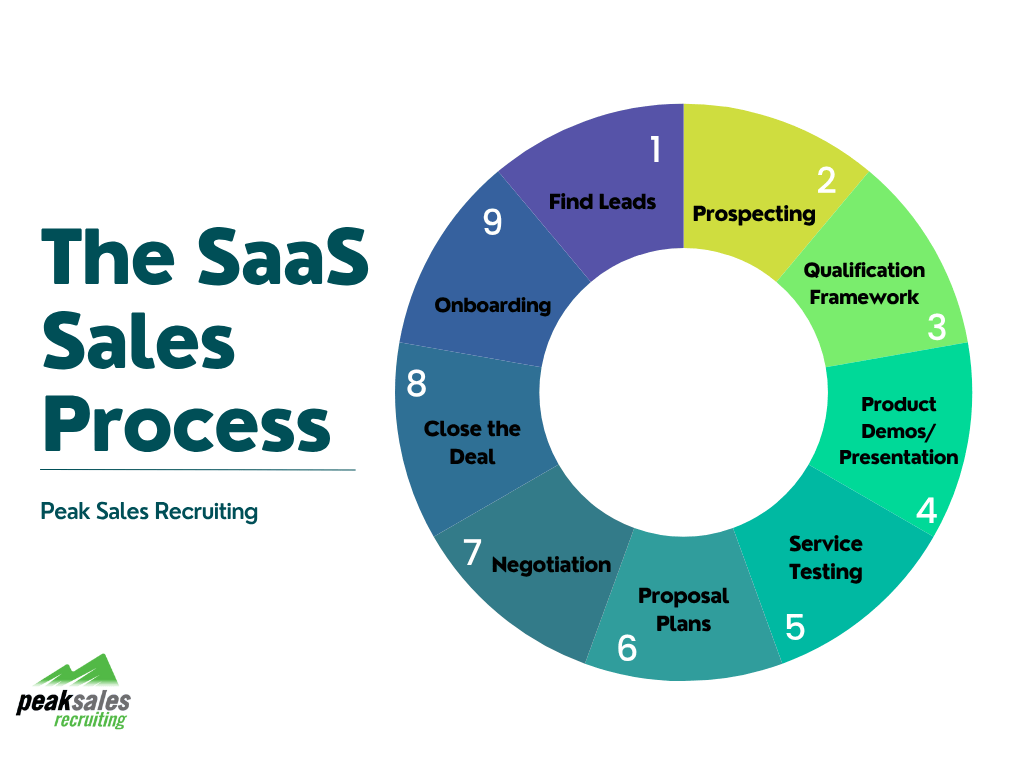Ready to elevate your sales game to unprecedented heights? All you need is a few hours and one of the books on this list to get started!
These management and leadership books will give you the secrets to developing your skills as a sales manager and leader. They include timeless sales classics, research-backed methods, and contemporary masterpieces based on hard-earned perspectives.
Let the reading begin!
[The links included in this post are NOT affiliate links. Peak Sales will receive NO commissions or incentives for purchases made through them.]
#1 Sales Management Simplified by Mike Weinberg
If you’re looking to build a high-performance culture within your sales department, this is the sales management book for you. Mike Weinberg explains how to lead a productive sales meeting and set standards for effective sales calls. This book will help you evaluate your management style and practices honestly. It might be the wake-up call you’ve been waiting for.
In Sales Management Simplified, sales leaders can find the truth they need to become the best manager. They can develop themselves personally and professionally.
→ Buy Sales Management Simplified on Amazon

#2 Strengths Based Leadership by Tom Rath and Barry Conchie from Gallup
To have a successful sales team, the leader must understand their team’s strengths and weaknesses. With the book Strengths Based Leadership in hand, you’ll be able to tap into the unique strengths of each member of your sales team. This will equip you to better determine what type of salesperson they’ll be and the sales process they’ll be most suited for.
Strengths Based Leadership is backed up by over three decades of research regarding strengths, studies of over one million work teams, and the CliftonStrengths assessment taken by over 23 million people worldwide. This is an evidence-based book that any sales professional can benefit from.
→ Buy Strengths Based Leadership on Amazon

#3 The Psychology of Selling by Brian Tracy
Brian Tracy’s timeless classic teaches you the fundamental principles of sales. It helps you earn more money and enhance your sales strategies. His ideas, methods, and techniques are highly actionable and can be applied to sales in any industry. When setting sales goals and wanting to exceed them, this is the perfect book to inspire and fuel your ambitions. The Psychology of Selling is a valuable read for sales leaders, sales managers, and those with leadership aspirations.
→ Buy The Psychology of Selling on Amazon

#4 How to Win Friends & Influence People by Dale Carnegie
Despite being written over 80 years ago, this classic book stands the test of time and teaches foundational principles of leadership that are essential to any professional’s success. If the title has put you off, take a note from the old adage, “You can’t judge a book by its cover,” and grab yourself a copy today. Any reputable sales manager ought to have this book filled with notes and highlights from several rounds of reading.
In How to Win Friends & Influence People, you’ll find timeless guidance on motivating your sales representatives (and yourself) through values and inspiring influence. If you’re struggling to move your team forward, try applying the powerful principles in this sales leadership book.
→ Buy How to Win Friends…on Amazon

#5 Leaders Eat Last: Why Some Teams Pull Together and Others Don’t by Simon Sinek
A unified team works together, moves together, and achieves together. If your team is disconnected, confused, or even chaotic, the New York Times bestseller Leaders Eat Last will help you make sense of the problem and design effective solutions. Simon Sinek teaches leaders how to shift their teams out of cynicism and self-interest to create motivated and aligned teams.
Honorable mention goes to Simon Sinek’s book Start With Why — a great read for focusing your team on what matters most.
→ Buy Leaders Eat Last on Amazon

#6 Coaching Salespeople into Sales Champions: A Tactical Playbooks for Managers and Executives by Keith Rosen
This book could earn a permanent spot on your desk and within reach. Keith Rosen’s writing and teaching style is direct and detailed. This book is a valuable reference for leading and managing a sales team. It focuses on coaching instead of training.
In Coaching Salespeople into Sales Champions, Rosen provides playbooks for powerful coaching, clear improvement plans, and even coaching templates/scripts to get you started. If you’re a sales leader looking to enhance your team’s performance, this book is ideal. It provides new ways to turn inexperienced salespeople into valuable team members.
→ Buy Coaching Salespeople… on Amazon

#7 Race to Amazing: Your Fast Track to Sales Leadership by Krista S. Moore
Krista S. Moore’s book Race to Amazing builds on the idea of taking the “coach approach” to sales leadership. Moore’s insight brings a profound perspective to creating a rallying vision, a winning sales strategy, and effective sales management systems. You’ll lose track of time reading Moore’s entertaining stories and highly applicable advice.
Sales representatives recently promoted into sales leadership will get a skills upgrade from reading Race to Amazing while gaining the confidence they need to be great sales leaders.
→ Buy Race to Amazing on Amazon

#8 The Sales Leader’s Problem Solver: Practical Solutions to Conquer Management Mess-ups, Handle Difficult Sales Reps and Make the Most of Every Opportunity by Suzanne Paling
Let Suzanne Paling guide you through a concise assessment of why your sales reps won’t make challenging calls, track their work properly, or procrastinate prospecting for new business…and then devise concrete strategies to address your management woes.
Sales managers often cannot receive training. The Sales Leader’s Problem Solver is a 24/7 trainer that provides helpful advice and effective strategies.
→ Buy The Sale’s Leader’s Problem Solver on Amazon

#9 Cracking the Sales Management Code: The Secrets to Measuring and Managing Sales Performance by Jason Jordan and Michelle Vazzana
Methodology reigns supreme in Jason Jordan and Michelle Vazzana’s book Cracking the Sales Management Code. This book is set apart by its focus on controlling sales performance and effectively managing a sales force. Inside, you’ll find a best-practice approach anchored in metrics that measure action and impact.
Sales leaders who want a straightforward and actionable plan for improving their team’s sales process and performance will find solace away from more organizational leadership-focused and interpersonal coaching books in Cracking the Sales Management Code.
→ Buy Cracking the Sales Management Code on Amazon

#10 Smart Sales Manager: The Ultimate Playbooks for Building and Running a High-Performing Inside Sales Team by Josiane Feigon
This book is an essential read for any inside sales manager facing Sales 2.0 without the tools needed to win. Josiane Feigon covers how to sell to the new elusive buyer, choose intelligence tools, and retain sales superheroes through relatable examples that reveal a clear path forward. Complete with manager cheat sheets, this book gives you everything you need to handle even the toughest of situations to ensure your sales team’s success.
→ Buy Smart Sales Manager on Amazon

#11 Sales Manager Survival Guide: Lessons from Sales’ Front Lines by David Brock
The Sales Manager Survival Guide presents a simple and easy-to-follow playbook for management success with the hidden benefit of improving employee retention.
Whether you’ve already made mistakes in your management journey or just want to avoid making as many as you can, the practical guidance David Brock brings will help you easily navigate sales cycles. This book helps current sales managers get back on track. It is also vital for new and aspiring managers to start off right.
→ Buy Sales Manager Survival Guide on Amazon

#12 The Accidental Sales Manager: How to Take Control and Lead Your Sales Team to Record Profits by Chris Lytle
Unexpected promotions can leave sales representatives either motivated to learn or lost in their new roles. If you’ve received an unexpected promotion yourself, The Accidental Sales Manager will give you the advantage you need. From hiring to developing your representatives and running efficient meetings to impactful one-on-ones, Chris Lytle covers it all.
This book focuses on management methods and implementing processes and focuses less on the personal development behind long-term leadership.
→ Buy The Accidental Sales Manager on Amazon

#13 Nuts and Bolts of Sales Management: How to Build a High-Velocity Sales Organization by John Terace
Nuts and Bolts of Sales Management covers a few unique topics, such as how to balance morale, execution & teamwork, how to develop a powerful sales culture, and how to leverage expenses while managing your budget. Given its targeted guidance, managers can regularly revisit and reference this book.
If you want to execute your sales vision with more precision, this is the sales management book you need.
→ Buy Nuts and Bolts of Sales Managment on Amazon

#14 52 Sales Management Tips – The Sales Manager’s Success Guide by Steven Rosen
An easy read to pick up, put down, and meaningfully action, 52 Sales Management Tips is a book designed to help sales managers struggling in a corporate structure that doesn’t support them. Improve your personal management performance by taking charge of your development needs. Reach for this book whenever you need a boost.
→ Buy 52 Sales Management Tips on Amazon

#15 ProActive Sales Management: How to Lead, Motivate, and Stay Ahead of the Game by William “Skip” Miller
Reveal your blind spots with Skip Miller’s acute approach to ProActive Sales Management. This book will help you save time and face with humbling yet motivational wisdom and guidance on maintaining control while you achieve your business goals.
This book is a great pick for all sales managers and leaders looking for a way to escape procrastination and pick up the pace of their success.
→ Buy ProActive Sales Management on Amazon

#16 Sales Leadership Playbook: The Definitive Guide to Sales Leadership by Shawn Hamilton
For a comprehensive guide to sales management, read the Sales Leadership Playbook by Shawn Hamilton. Leaders in smaller businesses with cross-functional relationships will find Hamilton’s insights particularly helpful.
Sales Leadership Playbook gives a broad picture of the sales landscape, the mindset needed to succeed in the industry, and how to build trust to get ahead. It also equips readers with tools to communicate effectively, integrate emotional intelligence into their management style, and empower their team. If gaining internal cohesion while building stakeholder support is important to your organization, this is the sales management book for you.
→ Buy Sales Leadership Playbook on Amazon

#17 The Qualified Sales Leader: Proven Lessons from a Five Time CRO by John McMahon
SaaS sales presents specific challenges that set them apart from other types of sales. For this reason, a sales management and leadership book devoted to these professionals is essential. The Qualified Sales Leader brings readers on a journey through a strategic sales structure with pointed questions for reflection and fueling action.
If you’re in the enterprise technology sales sector as a sales manager, leader, or representative, this will be an enlightening read for you.
→ Buy The Qualified Sales Leader on Amazon

#18 The Sales Boss: The Real Secret to Hiring, Training and Managing a Sales Team by Jonathan Whistman
High performance is often considered an individual characteristic when it must be a collective one. Jonathan Whistmas supports this claim in The Sales Boss by sharing the true drivers of high performance and how to invest in them so your team will be destined to win. The psychology of peak performance and proven hiring and training techniques will help you make real-world decisions that foster a quality team.
This book reveals the secrets to sales management and building a top-performing team, making it a fantastic read for any sales professional or executive looking to grow their sales team or hire top performers.
→ Buy The Sales Boss on Amazon

#19 Never Split the Difference by Chris Voss and Tahl Raz
Negotiations are a part of our everyday lives, conversations, and exchanges — but we aren’t always in tune with our power to connect, influence, and ultimately get what we want. In Never Split the Difference, the FBI’s former lead hostage negotiator, Chriss Voss shares his core negotiation techniques.
Sales managers and leaders will find this book filled with techniques for interacting with team members and helping representatives improve client relationships and sales conversions.
→ Buy Never Split the Difference on Amazon

#20 The Sales Development Playbook: Build Repeatable Pipeline and Accelerate Growth with Inside Sales by Trish Bertuzzi
Trish Bertuzzi turns several decades of sales expertise into a street-smart guide to turning well-established managers into leaders of exponential success.
Bertuzzi understands that navigating management of your inside sales team while revenue and performance are stable is one thing — figuring out how to continue doing your job well when your expansion seems out of this world is another. The Sales Development Playbook will challenge you and your team to level up.
→ Buy The Sales Development Playbook on Amazon

Explore more sales insights by visiting our website. If you’re curious about our recruitment services click here to speak with a sales representative today!
relpost-thumb-wrapper
Related posts
close relpost-thumb-wrapper
Eliot Burdett
He co-authored Sales Recruiting 2.0, How to Find Top Performing Sales People, Fast and provides regular insights on sales team management and hiring on the Peak Sales Recruiting Blog.
Latest posts by Eliot Burdett (see all)
- 20 Of Our Favorite Books About Sales Management and Sales Leadership – October 20, 2023
- How To Make Progress On Your Sales Goal Without A Sales Leader – September 15, 2021
- Augment Your Recruiting Strategy During “The Great Resignation” – July 26, 2021









